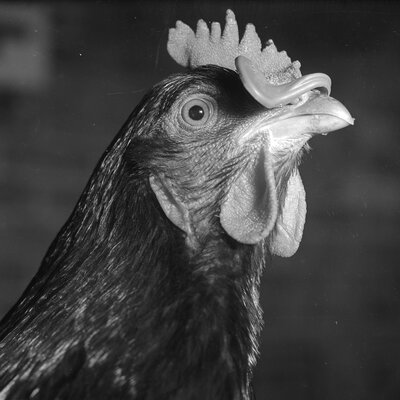Joel Kincaid, 2017; Terry Gross (Fresh Air); CC Liu, Ashley Wells (eds.), Wisdom Quarterly
 |
| How can I help animals? |
But what about chickens?
 |
| "Cage-free" is a sham in practice but sounds so good people buy it (Charlie Neibergall/AP). |
.
 The chicken for sale at the local grocery store isn't like the chicken our grandparents used to eat.
The chicken for sale at the local grocery store isn't like the chicken our grandparents used to eat.
They're [chemically altered and] bigger and more "breasty," says public health journalist Maryn McKenna — and that's by [genetically modified and industrial] design.
"In the United States, [flesh eaters] much prefer to eat white meat, and so [industrial scale killers] have bred chickens and genetically redesigned chickens in order for them to have a lot of breast meat," McKenna says.
 |
| I'm Gross, not chicken |
Many large poultry farms [force] feed antibiotics to their chickens in an effort to prevent disease. But McKenna says that humans who eat those chickens are at risk of developing not only antibiotic-resistant gastrointestinal infections but urinary tract infections as well.
She chronicles the use of antibiotics in the poultry industry in her new book, Big Chicken. More + AUDIO
She chronicles the use of antibiotics in the poultry industry in her new book, Big Chicken. More + AUDIO



















































































































































































































































No comments:
Post a Comment